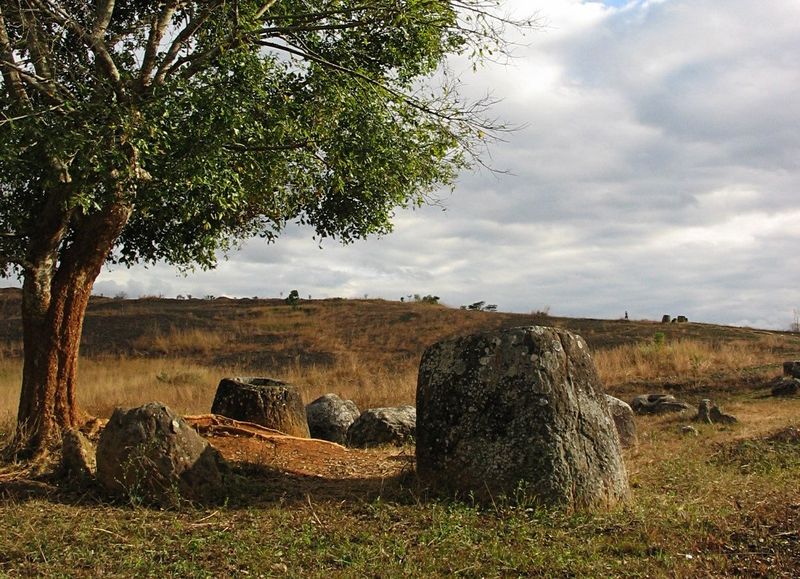 Submitted by Henry on
Submitted by Henry on

CC BY-SA 2.5 wilipedia commons
The mists of time conceal many ancient cultures from even the most clever and determined modern archaeologist. While there are many who left behind written fragments that give scientists something to go on, many more failed to develop a system of writing. The lives of millions of men and women, with all of their struggles and triumphs, faded into the shadows of history, leaving behind only a few tangible scraps for their descendants to piece together. Some of these “scraps” might indeed be large, but their size makes them no less enigmatic than the smallest artifacts. Such is the case in Xieng Khouang province in Laos, where a high plateau is dotted with clusters of sandstone jars. The mysterious artifacts, some measuring as much as 9 feet tall, are the most tangible remains of a prehistoric southeast Asian culture about which little is known.
A long standing mystery
The Plain of Jars, as the site became known, was first studied by French archaeologist Madeline Colani in the 1930’s. She discovered that the jars were spread over the plain in a pattern that initially seemed to have no rhyme or reason, with as many as one to one hundred pots in each site. It was later found that most of the pots were placed in prominent areas, with commanding views of the surrounding area. Each pot was fashioned from a single stone, some being well formed while others were rather crude. There was also an assortment of small artifacts found in and around the pots, including bronze and iron tools, cowry shells, and glass beads. Many of the pots appeared to have been robbed. One site had a prominent cave, where Colani found bones and ashes.
This led Colani to hypothesize that the entire complex was a funerary site. Many Southeast Asian cultures practiced secondary burial, where a corpse is left to rot before being cremated. This allowed the soft tissues to decay, leaving behind bones and ligaments. Archaeologists believe that the bodies of nobles were thus exposed in the pots, while the poor were laid out in a trench. After cremation, the ashes of nobles along with their expensive belongings were placed back in the jars. So, the plain of jars is quite possibly a large set of funerary urns.
Similar sites in Northern India and Vietnam have led archaeologists to hypothesize that the builders of the Plain of Jars traded widely. The Laotian Highlands are rich in salt, a valuable resource in the ancient world. The accepted belief is that these people traded upon caravan routes, exchanging salt for beads, cowry shells, and other luxury goods. It appears that the stone jars represent the works of a thriving prehistoric culture dating back nearly 2,000 years. More research to unravel the enduring history of who these people were needs to be done, but unfortunately a modern conflict left the Plain of Jars the most dangerous archaeological site on Earth.
Bombs and mines
From 1964 to 1973, American bombers pounded Laos, attempting to destroy Viet Cong supply routes passing through the country as part of the ongoing Vietnam War. Over the course of nine years, American planes hammered the country with two million tons of bombs and other munitions. Xieng Khouang Province was targeted by some 63,000 sorties. The area is carpeted with unexploded bombs from this blitz, leading to thousands of deaths a year from farmers and other locals accidentally detonating bombs.
The Plain of Jars is itself is well within the danger zone, hampering efforts to excavate the area and find more about the culture who produced the strange urns. Efforts to clean up the site are ongoing, but the remains of a massive modern conflict could well hamper efforts to understand this ancient site for years to come.
Article Sources:
http://www.telegraph.co.uk/news/worldnews/asia/laos/1478626/History-haunts-the-Plain-of-Jars.html
http://plainofjars.net/prehist.htm
http://www.unescobkk.org/culture/wh/ap-sites/plain-of-jars/
Source: http://www.oddlyhistorical.com/2017/01/13/plain-jars/
- 912 reads